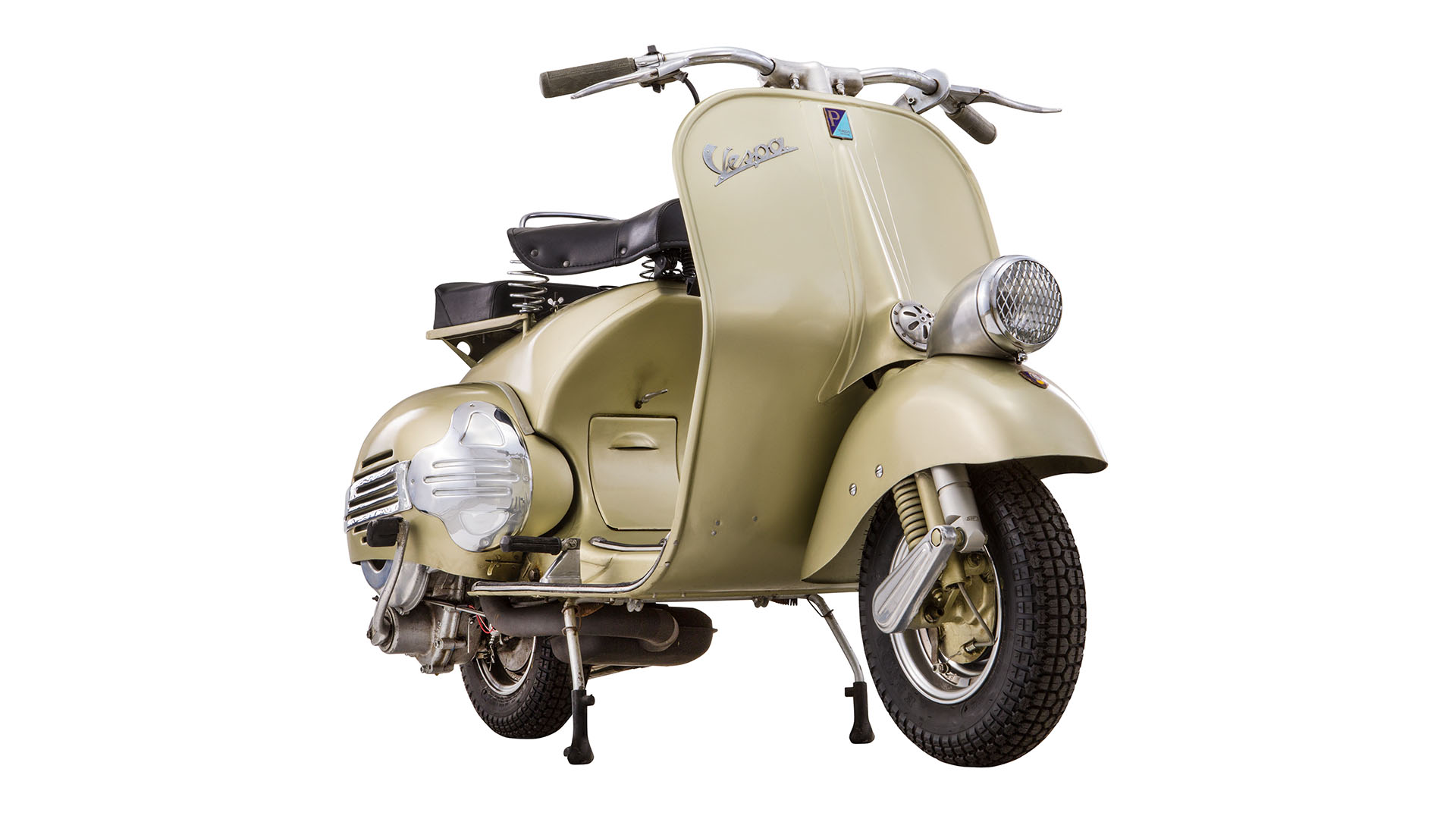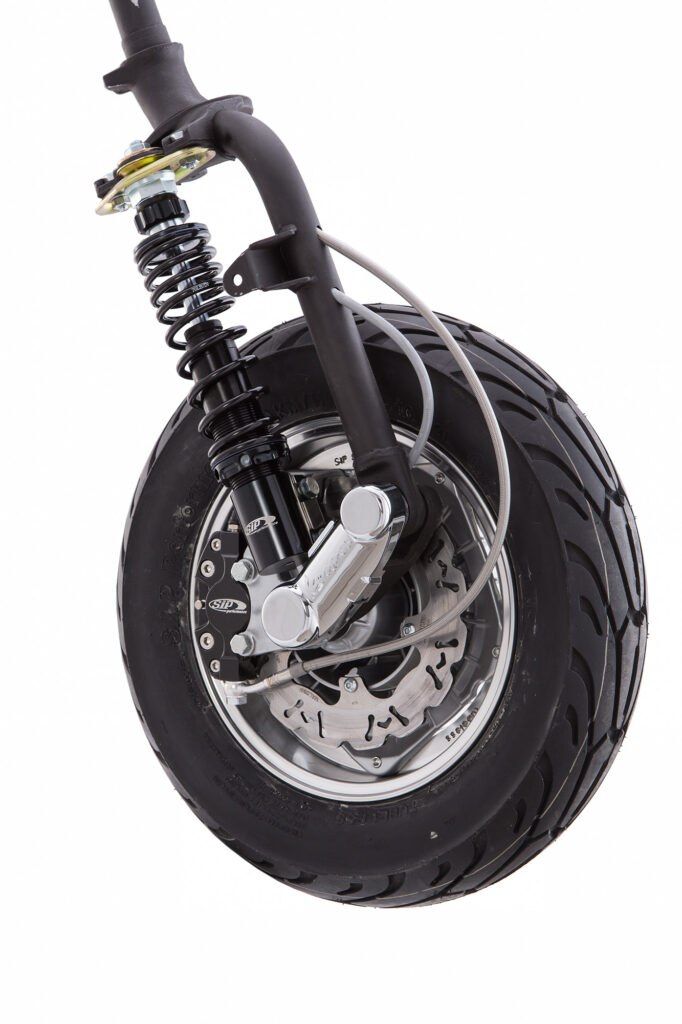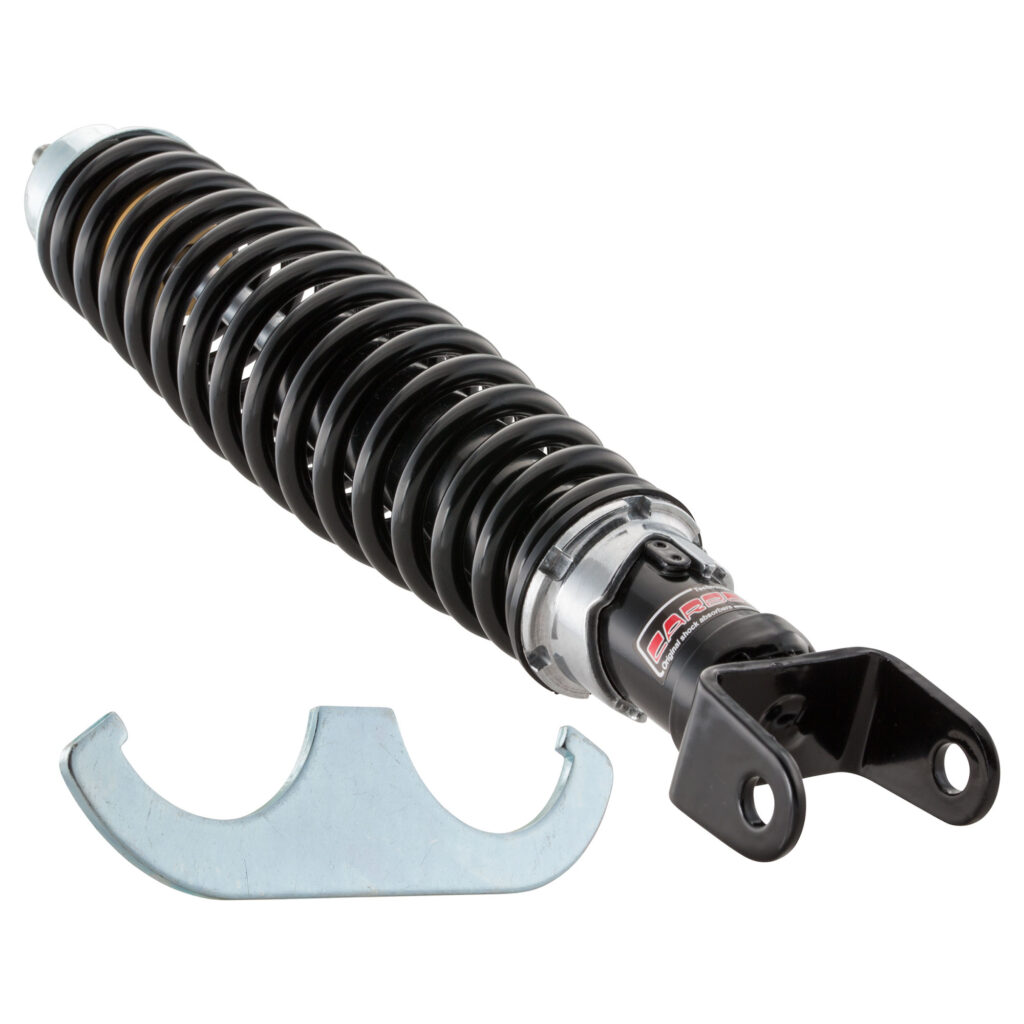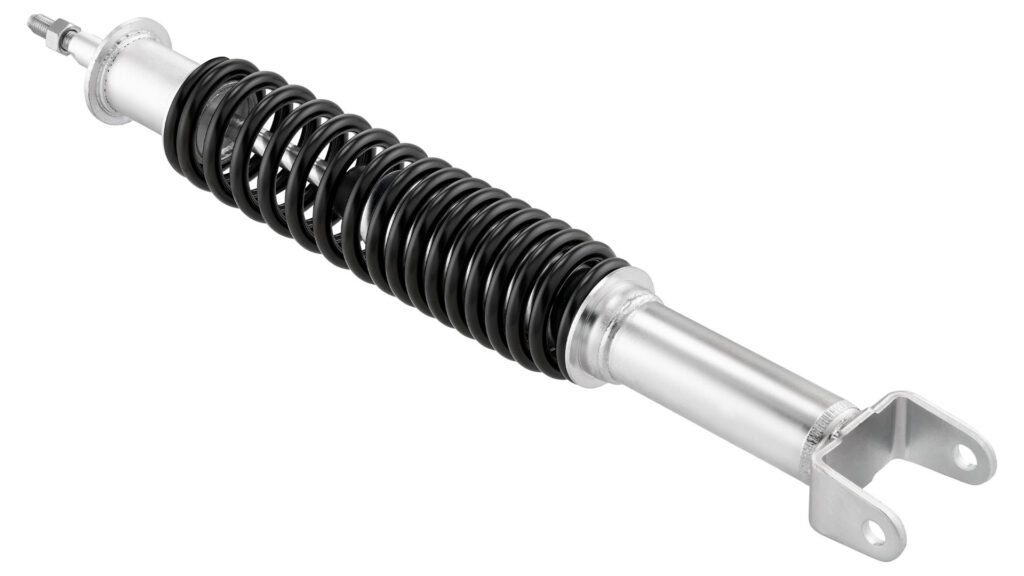All Vespa riders are probably familiar with the feeling of riding over an uneven surface where the rigid frame has hardly any cushioning. In the “worst case”, this can even lead to the nightmare of all Vespisti, the deformation in the frame known colloquially as a “wave”. This very specific weak point on all older models causes the sheet metal on the mudguard to bend backwards when exposed to external forces such as kerbs or potholes. This stretches the sheet metal at the bend, whereby it springs back into its original position under lower loads. However, if the sheet metal is stretched too much, it deforms as it springs back.
The shock absorbers play a key role in preventing such unsightly consequences.
Two become one!
In line with this motto, the structure of a suspension strut, also known as a shock absorber, is roughly made up of two components. The two basic components are the spring and the damper. The spring enables flexible wheel suspension, which leads to increased ride comfort and even tire contact with the ground. Regardless of the road surface. The damper, on the other hand, serves to dampen the rebound movement of the wheel. Without the damper, the energy of the spring during rebound would result in poor or no road contact.
Further development for perfect adaptation
In the days when the older Vespas were built ex works, even less thought was given to the further development of Vespa shock absorbers. Although the roads at that time were even worse than they are today, the technology was still less developed than it is today. Despite better roads, this was incentive enough for the experts at SIP Scootershop in Landsberg am Lech to develop significantly improved shock absorbers and bring them onto the market. The in-house SIP Performance series offers added value with three features which, in addition to a more pleasant riding experience, also significantly increase safety.
One special feature is the special spring preload. An infinitely variable preload makes it possible to preload the shock absorber spring harder in the basic setting. The forces acting on the suspension are thus countered at an early stage and effective damping is generated. The spring preload is adjusted using special threaded rings, for which the appropriate tool is supplied.
The spring itself is also a so-called progressive spring. This means that the distances between the spring coils are smaller (progressive). Only progressively wound springs allow a really comfortable response when braking, riding with luggage or in two-man operation, i.e. the spring initially responds very finely and becomes “harder” with further compression or loading.
Harder springs, also in other colors, are available as spare parts and are intended for heavy riders and high payloads. This spring also has a positive effect in the aforementioned situation over kerbs or through potholes. The rebound adjustment is the third special feature that rounds off the overall picture positively and influences the rebound behavior of the shock absorber, i.e. it regulates the response behavior when driving over uneven road surfaces, bumps and, above all, when braking. Depending on the model, between 9 and 18 rebound setting options (“clicks”) are available. Turning the rebound setting clockwise increases the damping, turning it counter-clockwise decreases it.
Different manufacturers – different requirements
Even though the SIP Performance series is impressive in terms of quality and value for money, there are other manufacturers who all offer tried and tested products. One of these manufacturers is the Italian manufacturer Carbone, whose products, unlike the Performance series, are not street legal. The spring preload can also be adjusted to personal requirements, although the spring is slightly harder than the original spring.
Vespa riders who do not attach great importance to special improvements and are instead looking for an original and inexpensive solution can choose shock absorbers from RMS. These manufacturer-quality products are comparable to the factory-fitted ones. A notable disadvantage is that they offer very few adjustment options and therefore hardly allow any individual adjustments.
All in all, the shock absorber area is probably one of the areas with the widest range of all components. A wide variety of products are available for tuning measures, moderate adjustments or simple maintenance. The much-feared “wave” cannot be completely prevented. However, the risk of this is reduced to a minimum, while riding comfort is increased to a maximum. When purchasing one or both new shock absorbers, attention should also be paid to the respective road approval. As already mentioned, not all models have the appropriate approval and therefore cannot be used legally on the road.






